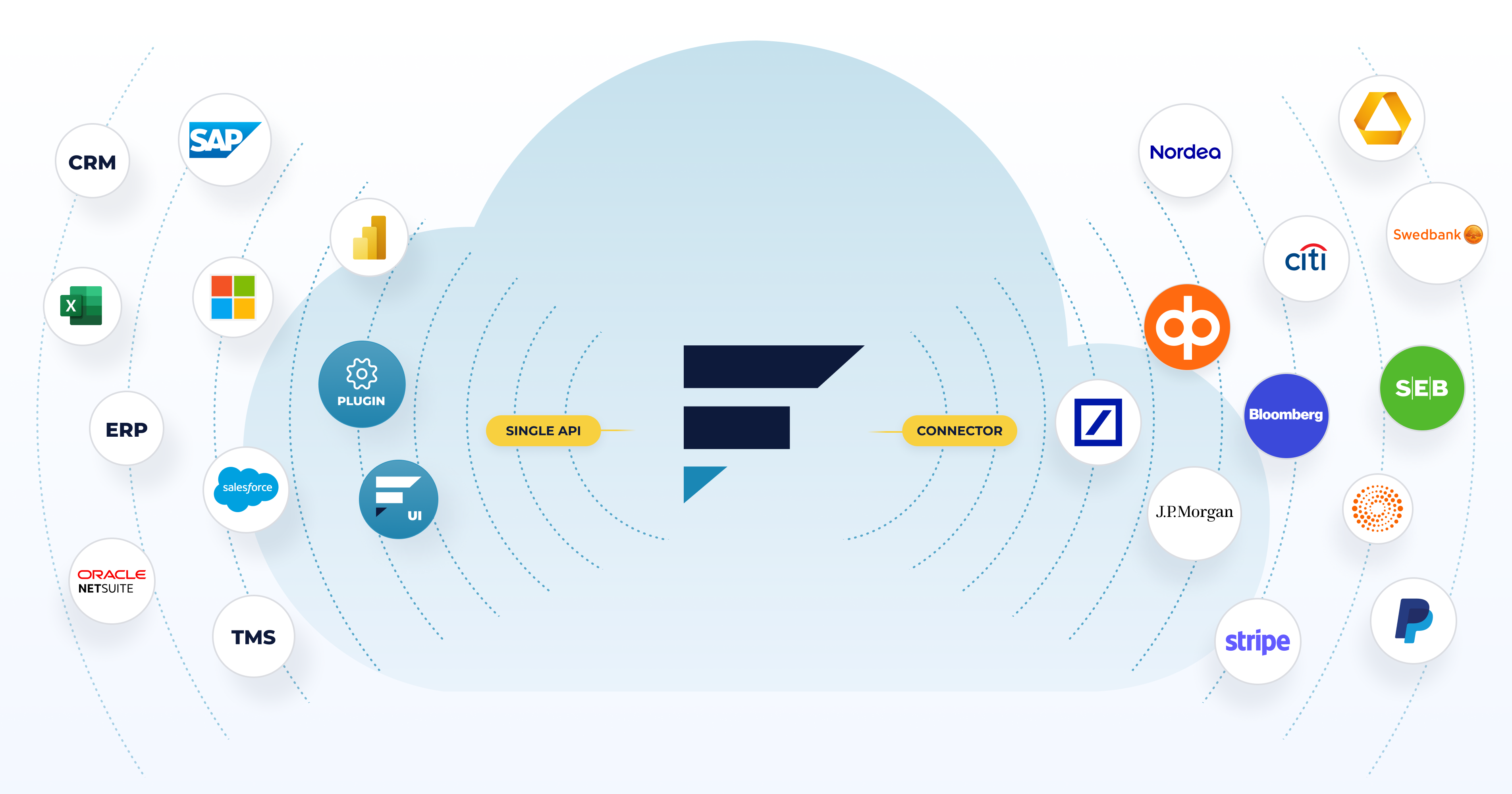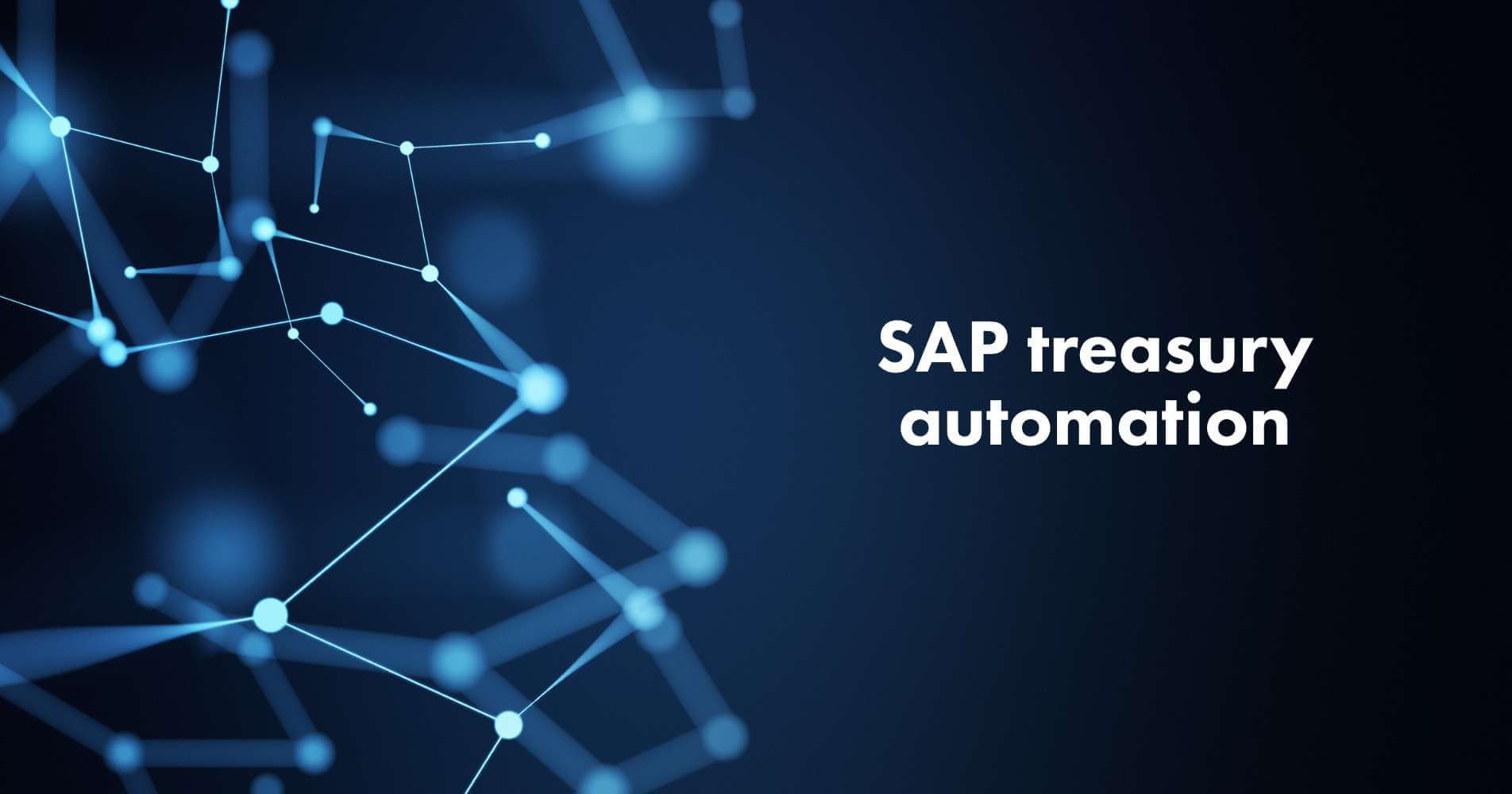How to build a modern treasury infrastructure?

The requirements for finance and treasury solutions are changing as the complexity of system landscapes, payment operations and data are growing. Dealing with multiple systems, banks and other external providers is a challenge that keeps IT consultants busy. Continuous changes added with M&A activity lead to fragmented email & spreadsheet-heavy processes, keeping compliance officers on their toes. Treasurers are looking for more than a stand-alone solution and greater visibility to support their operations and for a more modern treasury infrastructure. Orchestration of connectivity, systems and data is central to designing a modern treasury infrastructure.
Siloed legacy
Treasury Management (TMS) and Cash Management Systems (CMS) have been traditionally designed for standalone use. One might have e.g. a different set of legal entities and bank accounts entered in the TMS vs. company ERP (or multiple ERPs), depending on the treasury scope. Integrations between the systems vary but are often limited to balance statements and payment files. File format changes cause challenges and data is manually entered into both TMS and ERP (e.g. FX and other market data). Master and reference data updates are done manually to multiple systems when changes occur. One of the challenges is M&A activity with new businesses and systems to cover, increasing complexity.
With legacy technology in use, the amount of technical debt is high, and hence system changes are not easy to implement. Even if the providers try to listen to customer needs, they are struggling to respond to these. Building things from scratch requires a big investment. Many businesses still use the same TMSs used in early 2000 as heavy implementation projects cause a bottleneck for upgrades. In the past, back-, middle- and front-office, as well as funding operations, were seen as separate islands. Today not only do these islands need to be seamlessly connected — treasury should be connected to a broader finance function, to external partners and be closer to customers, driving the success of every business.
Treasury orchestration
Connectivity, data, automation capabilities and enabling real-time operations are the key building blocks of a modern treasury infrastructure. Having a single integration for each external partner simplifies treasury operations vs. integrating every solution separately. By managing and being able to monitor integrations in one source, treasurers can shield themselves against changes causing a chain reaction.
Synchronisation of master and reference data between systems supports end-to-end digitalisation, allowing closer to plug-and-play system implementations and not getting locked to one solution provider. Businesses can avoid costly mistakes by managing FX and market rates for accounting and pricing purposes in one source from which to feed these to all other tools. Having a central repository of treasury master data that can be fed to the chosen systems and checked against any changes helps to automate audit & control tasks.
With a single API to feed data and services to existing tools in the required format, end-users can manage the schedule when transfers are done and when live intra-day or end-of-day data is used. With this single API connected e.g. to different payment rails of banks or payment providers, businesses can embed payment functionality wherever needed. Treasurers can become more strategic business partners while having control over payment & treasury activities.
An orchestration layer enables seamless data loops from banks to ledgers and bookkeeping and back to required systems and parties. Businesses can extend the lifecycle of legacy systems by orchestrating connectivity & data using a modern and agile software platform. Business logic and automation can be configured using a low/no-code solution in a cost-efficient way vs. investing in legacy tool development, accelerating digital transformation across the finance function.
Open data, architecture and APIs
As we move into the world of open data, open architecture and open APIs (Application Programming Interfaces), these offer an enormous opportunity to streamline and automate processes. With structured data available in a central repository or accessible via APIs, predictive analytics and AI/ML capabilities can be applied on a wider scale vs. today with data stored in various spreadsheets on the file share and in systems with limited integration capabilities. Given that the world is still heavily file-based and relaying on batch processing — one needs to be able to work in a hybrid mode, supporting both the legacy connectivity and the more modern APIs.
Our solution
At FinanceKey, we have developed a modern & agile platform to orchestrate your treasury operations — connectivity, payments, data and workflows — helping treasurers to modernise and automate their Excel & email-heavy processes, collaborate better and drive intelligent real-time operations. FinanceKey’s reporting and dashboard functionalities help end-users flexibly configure the views they require, choose a schedule to receive reports and share these with others, allowing people to go home early on Fridays instead of having a continuous flow of work.
We provide the agility to move away iteratively from a file-based batch processing to a connected API-first environment and the flexibility to operate the systems & infrastructure of your choice. Our customers achieve end-to-end digitalisation and can take advantage of any banking API use case while we help banks accelerate Go-to-Market for their commercial APIs.
Please contact us at hello[at]financekey.com on how we can help you build modern treasury and payment infrastructure.


